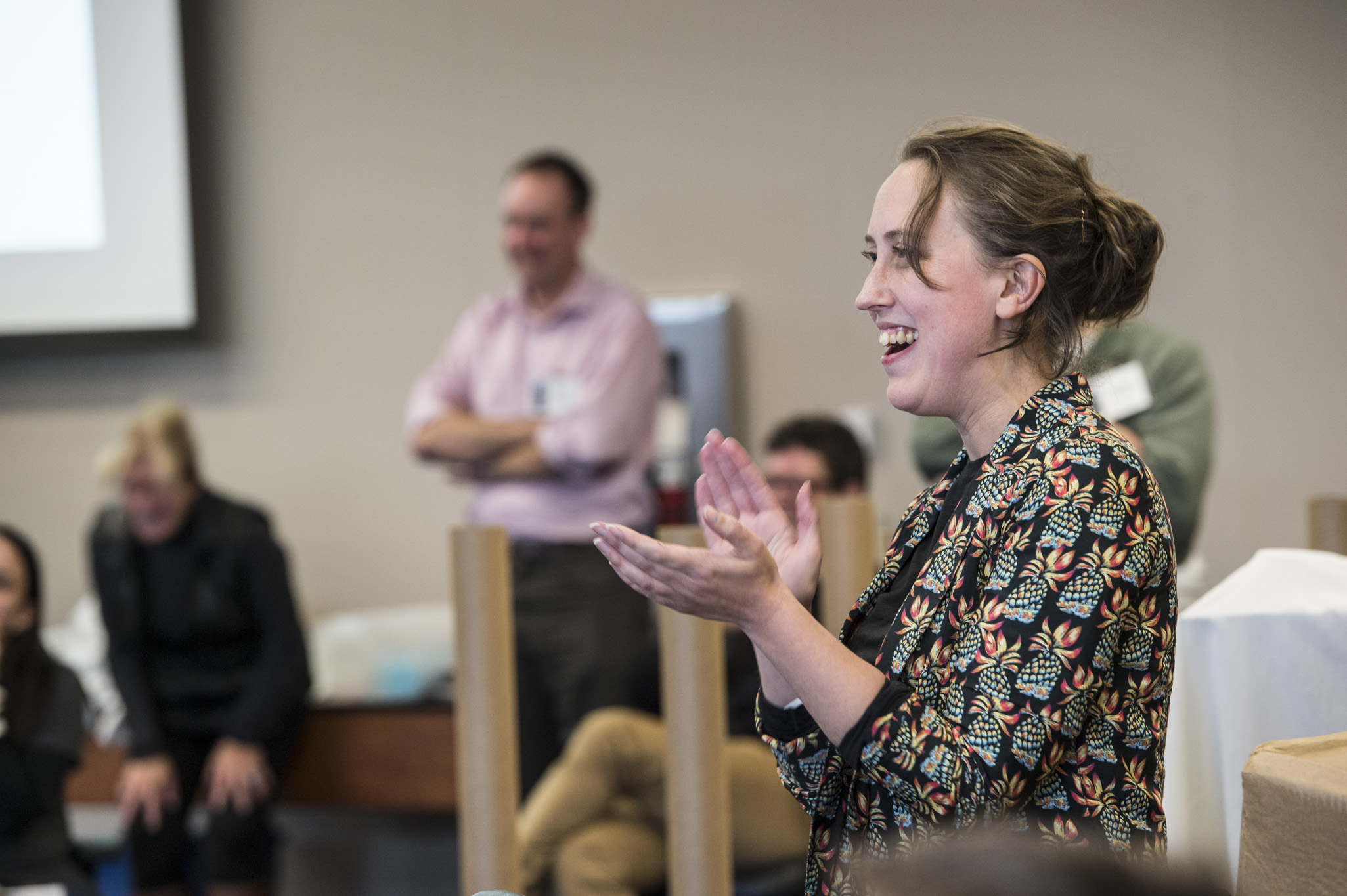Jennie Winhall: Drawing on a Blank Slate

Faculty member Jennie Winhall facilitates a program.
Sometimes, you just need a blank slate. This is the world designer Jennie Winhall works in as design and innovation director with UK-based social innovation firm Participle. She applies the concept of design thinking to reframe large-scale problems, stepping back to do what’s referred to in the design community as upstream design thinking. “Nobody knows what the real problem is,” she says. “That’s where design thinking comes in, as opposed to design practice.”
On the surface, design thinking is a straightforward process: reframe the problem, generate ideas, find the biggest impact opportunity, and then explore different ways to address that opportunity. But she adds, “the toughest thing for people to do is to let go of where they are right now and join us in thinking very differently. It can be very uncomfortable for a while until things become clearer.” As a designer, she says, “you try to have no assumptions about what’s possible and what’s not possible.”
Winhall works a lot in prototyping, a useful vehicle for change. “When you prototype something, you’re molding a new way of being but in a kind of safe way,” she says. “When people build a prototype they tend to break a lot of rules and space tends to open up around it, people find ways around things they thought they couldn’t do.”
Winhall’s work here is really focused on exploring what role Banff Centre can play in supporting organizations in developing social innovation strategies. “It’s very difficult work; at the same time you’re trying to generate new solutions. You’re trying to change the market in which those solutions are going to exist.”